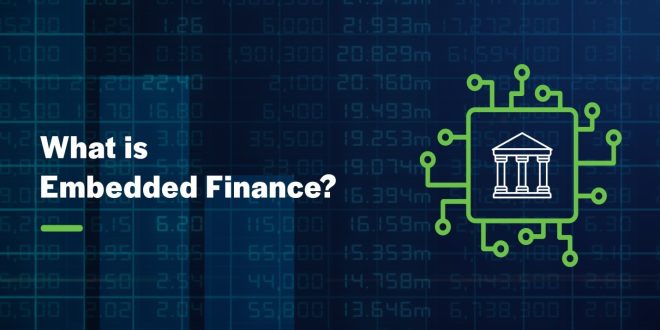The world of finance is constantly evolving, and new technologies are playing a crucial role in this transformation. One of the latest developments in this field is the concept of embedded finance. Embedded finance refers to the integration of financial services and products into non-financial applications and platforms, such as mobile apps, social media platforms, and e-commerce websites. This integration creates a seamless user experience and provides customers with easy access to financial services.
About embedded finance
Embedded finance has the potential to revolutionize the financial industry by making financial services more accessible and convenient for customers. With the integration of financial services into everyday applications and platforms, customers no longer need to visit a bank or financial institution physically. Instead, they can access financial services directly from the apps and platforms they use daily, making it more convenient for them to manage their finances.
One of the main benefits of embedded finance is that it can reach underserved and unbanked populations. According to the World Bank, around 1.7 billion adults worldwide do not have access to financial services, such as bank accounts, loans, and insurance. With embedded finance, people who do not have access to traditional banking services can now access financial services through their smartphones or other devices. This can be life-changing for individuals in developing countries or rural areas who do not have access to physical banks.
Embedded finance also provides opportunities for businesses to offer more personalized financial services to their customers. By integrating financial services into their platforms, businesses can offer customized financial products that meet their customers’ specific needs. For example, a retailer could offer point-of-sale financing to customers, allowing them to purchase items on credit directly from their online store. This not only benefits the customers, but it can also help businesses increase customer loyalty and revenue.
The rise of embedded finance has also led to the emergence of new fintech companies that specialize in providing financial services through third-party applications and platforms. These companies, known as embedded finance providers, work with businesses to integrate financial services into their platforms. Embedded finance providers can offer a wide range of financial services, such as payments, lending, insurance, and investments, making it easier for businesses to offer these services to their customers.
However, embedded finance is not without its challenges. One of the main concerns surrounding embedded finance is the issue of data privacy and security. With financial services integrated into third-party platforms, there is a risk that customers’ financial information could be compromised. As a result, it is crucial, that embedded finance providers and businesses take the necessary steps to ensure the security of their customer’s data.
Another challenge facing embedded finance is the potential for regulatory uncertainty. With financial services being offered through non-financial applications and platforms, it can be challenging to determine which regulatory bodies are responsible for overseeing these services. As a result, it is essential for businesses and embedded finance providers to work closely with regulatory bodies to ensure that they are complying with any relevant regulations.
Despite these challenges, embedded finance has the potential to transform the financial industry and provide customers with more accessible and convenient financial services. With the rise of fintech and the increasing adoption of digital technologies, embedded finance is poised to become an integral part of the financial ecosystem. As businesses and consumers continue to embrace this new model of finance, we can expect to see further innovation and growth in this field.
Conclusion
Embedded finance is a new concept that is changing the way we access and use financial services. With the integration of financial services into non-financial applications and platforms, embedded finance provides customers with a seamless and convenient way to manage their finances. By reaching underserved populations, offering personalized financial services, and enabling new fintech companies to emerge, embedded finance has the potential to transform the financial industry. However, challenges such as data privacy and regulatory uncertainty must be addressed to ensure the success of this new model of finance. As we continue to embrace
 Naasongs.fun
Naasongs.fun




